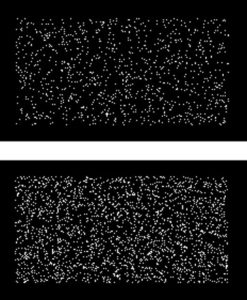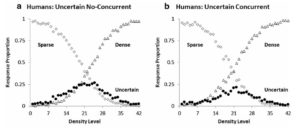Human beings think. What’s more, we also think about our own thinking—that is, we monitor, recognize, and control our own cognitive processes. This ability is known as metacognition, and it allows us to make judgments of learning or knowing, for example when we ask ourselves questions such as “What do I already know about this topic? How have I solved problems like this before?” The answers to those questions that we obtain by querying our own cognitive system may guide our further learning and future task performance.
There has been much research into metacognition and the processes underlying it. A recent article by Mariana Coutinho and colleagues in the Psychonomic Society’s journal Memory & Cognition continued this tradition by asking whether metacognition can become “automatic”—that is, whether we can acquire the skills to monitor our own cognition to such an extent that we no longer have to devote conscious effort to the monitoring. Many cognitive skills, such as reading, are “automatic”, and as we have described in previous posts this can have unanticipated consequences. Might metacognition also attain this status of “automaticity”? And if so, how would that express itself in a complex decision task?
Coutinho and colleagues used what they called an “uncertainty monitoring” paradigm to examine this issue of potential automaticity of metacognition. In this paradigm participants perform a perceptual discrimination task in which stimuli varying in difficulty have to be classified into different categories. The figure below shows an example of the stimuli used by Coutinho and colleagues. People were presented with pixel boxes on each trial, and they had to classify the stimulus as being “sparse” or “dense” or (in some conditions) as being in the “middle.”
The figure below shows a “sparse” pixel box at the top and a “dense” pixel box at the bottom. Altogether, there were many different stimuli with different levels of density in the experiment.

The metacognitive aspect of this task was introduced by providing participants with the option (in some conditions) to decline a response by clicking on a “?” below the stimulus. Participants were told to use this response “when they were not sure to which category the stimulus belonged.” When participants used the “uncertain” (“?”) response, they proceeded to the next trial without incurring the reward or penalty that was awarded on all other trials depending on whether or not their response was correct.
Thus, if people were good judges of their own ability to perform the task well, they would choose the “uncertain” response whenever the trial was sufficiently difficult that they ran the risk of committing an error. This is precisely what was found: When people were uncertain, they used the “uncertain” response a lot more than when the trial was easy and it was clear whether the stimulus was dense or sparse.
The most interesting feature of the results arose from another manipulation involving a “load” on working memory. Half the participants were assigned to conditions in which they had to remember some random digits before each discrimination trial and recall them immediately after each trial. It turned out that the proportion of “uncertain” responses decreased when a memory load was present in comparison to another condition in which there was no load. This is shown in the figure below:

The panel on the left shows the results when participants did not have to hold a concurrent load in working memory and the panel on the right shows what happens when a memory load is present. It can be seen that in both cases, the proportion of “dense” responses increases with the density of the pixel box, whereas the proportion of “sparse” responses decreases. This simply shows that people can perform the discrimination very well, although at intermediate density levels they find the decision quite difficult.
The black dots show the proportion of “uncertain” responses and it is clear that they differ considerably between panels. Specifically, they almost completely disappear when a memory load is present (right-hand panel), suggesting that the added cognitive demand makes it harder for people to make the metacognitive judgment that is required to decide whether one should withhold one’s response for lack of certainty about the outcome.
Could this simply mean that the “uncertain” response is an indeterminate “middle” response that people use to label intermediate, difficult stimulus level but that they omit when a memory load makes the decision more difficult? Other aspects of the results speak against that possibility: When people were explicitly asked to make a tri-partite decision between “sparse”, “dense” or “middle”, the effects of the memory load were reversed. With a memory load, the proportion of middle responses increased substantially—a striking contrast to the figure above which shows near-zero “uncertain” responses under memory load.
Overall, these results suggest that metacognitive judgments require considerable cognitive processing. When the capacity to do that additional processing is consumed by a memory task, then people sacrifice the option to apply their metacognition. One implication of this conclusion is that if participants were to receive sufficient practice with the metacognitive task, such that it becomes routinized or “automatic” and no longer requires much cognitive processing, then their ability to engage metacognition should no longer be impaired by a memory load.
This possibility was tested in a further experiment. The results were exactly in line with expectation and are shown in the figure below:

The figure shows the results of an experiment that was identical to the one just described, with the exception that participants received an additional 150 trials of training on the discrimination task before the experiment proper.
The figure is quite compelling: Memory load (left-hand vs. right-hand panel) no longer had an effect, and people consistently expressed their uncertainty in the middle of the range of densities, exactly as was observed in the first study, without practice, when no memory load was present.
The studies by Coutinho and colleagues add to our knowledge of metacognition by suggesting that even thinking about thinking can be practiced to the point where it becomes “automatic” and is protected against interference from other cognitive demands.
